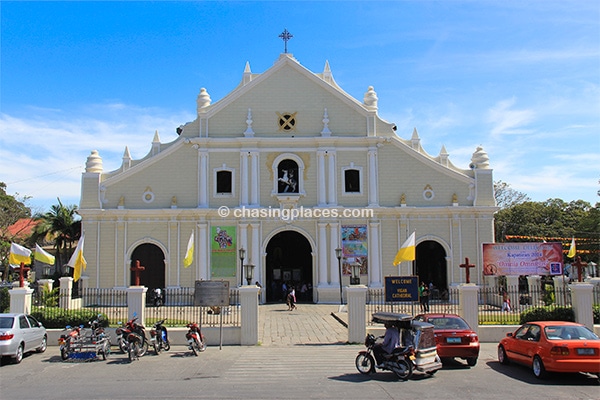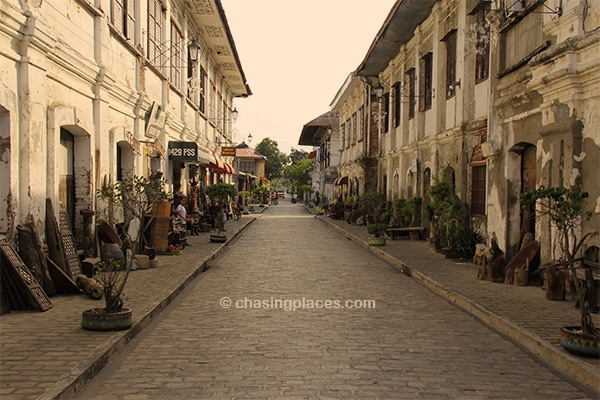Vigan is arguably, the most architecturally stunning towns in the Philippines. In fact, its historical centre is so exquisite, that it was included in the prestigious UNESCO World Heritage Site list. Vigan comfortably sits close to the north-east tip of Luzon Island, Philippines. Its recreational heart is in the north, which is marked by two squares – locally called plazas. The first square is called Plaza Burgos, and this is the access point to St. Paul’s Cathedral. The second main plaza is called Plaza Salcedo, which is the gateway to the Municipal Hall. But when people talk around Vigan, the first thing that comes to mind is its Historic Core Zone, which oozes with that rare old-world charm. This 16th century Spanish colonial town proves to be one of a kind in the country. That is why it attracts a large number of local tourists ever year.


The sight of Vigan’s cobblestone streets and rustic colonial mansions will make anyone realize that the time money and effort spent to come here is worth it. Some of the old colonial buildings were turned into commercial spaces like restaurants, cafes and shops. But despite their modern use, they have marvelously maintained their look and appeal. In an effort to make the historical core more authentic looking, the local government encourages the use of the calesa (local horse-drawn carriages) as the main transport for tourists.
UNESCO lauds the fact that the town is exceptionally well-preserved and intact, while historians claim that it is the best example of a Spanish colonial town in Southeast Asia. But what’s interesting is that the architecture in Vigan is not purely of Spanish origin. In fact, the building design and color reflect more than one cultural influence, which include Chinese and European. The strong Chinese influence was brought about by the town’s direct trading relations with China, which was already in place even before the Spaniards arrived. With precious items like porcelain, gold, beeswax and silk being actively traded here, Vigan became part of the galleon trade that involved 250 ships and connected Asia to Europe and even the Americas.

Because of the flourishing trading industry, Chinese traders chose to build their residences in the town. That is why one of the districts in the historic quarter is called the mestizo district. The word “mestizo” denotes fair-skinned locals. This is the district, which houses Plaridel Street and Mena Crisologo Street. The colonial buildings are the most concentrated on Crisologo Street. Around this area, you can also find the baroque homes, which were intentionally built to withstand earthquake attacks.
Travel Checklist: Do you have everything you need?
Find the Cheapest Flight to your Destination
Book Your Ideal Hotel: Booking.com or Agoda.com
Travel Safely, Get Travel Insurance
Rent a Car: Not all places have good public transport
Find the World’s Best Bus Tours
Use the best travel guides: Lonely Planet
Want more information about the historical district or the various events in town? You can drop by the provincial tourist information office next to the popular Café Leona. The fanciest hotels in Vigan are found within its Historic Core. But if you seek a more budget-friendly accommodation, you can always find small family-owned hotels outside the old town area. A number of them are just within walking distance. If you don’t feel like walking under the heat of the sun, you can always hire a tricycle. Depending on the distance, you will pay approximately 10 -25 pesos ($0.60) per person.
If you really want to enjoy the lovely cobbled streets and feel like you are walking back in time, explore Vigan an hour before dawn or sundown. There’s no doubt that the historic core is at its most picturesque and romantic during these times. Waking up early maybe a challenge but if you make the effort; you don’t have to deal with the crowds and your eyes will be rewarded handsomely. The mellow brightness that accentuates the texture and color of the colonial buildings will make you forget that this is the 21st century.

Want to find the cheapest room in Vigan?
Vigan has some solid mid-range and budget room options to choose from. Try your best to get your place as close as possible to the historical region of the city. I would try www.agoda.com or www.hotelscombined.com. During our trip to Vigan we booked with Agoda and we were quite satisfied with the selection and prices. Many of our “backpacking” readers who are budget conscious also like www.hotelscombined.com because of their cost saving price comparison searches that can be completed before bookings are confirmed. Hopefully, either one of these choices can point you in the right direction in terms of finding a room near the old quarter of Vigan.
Chasing Places will be releasing more stories about Vigan in the near future so stay tuned! In the meantime, feel free to ask any questions that you may have about this charming city in the Philippines.
